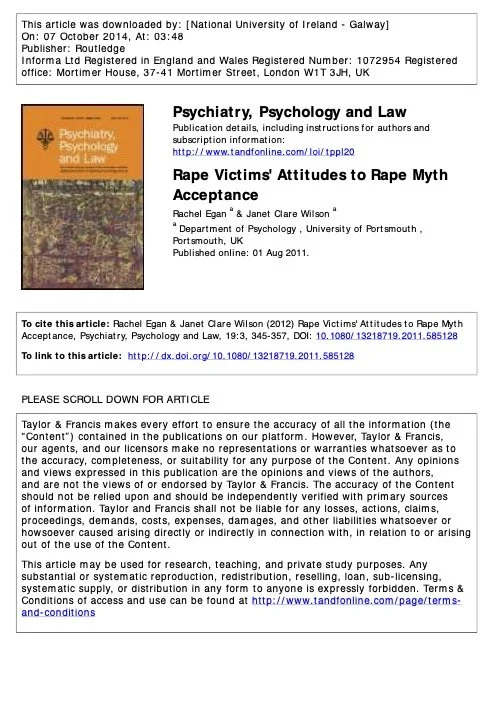By Rachel Egan & Janet Clare Wilson
The present study examined victims’ attitudes to rape and rape-reporting behaviour. There were 36 Rape Victims, and approximately half reported their rape to the police (Rape Victim – Report) and half did not report their rape to the police (Rape Victim – Not Report). There were 42 Crime Victims, and approximately half reported the crime to the police (Crime Victim – Report) and half did not (Crime Victim – Not Report). Participants filled out a questionnaire which consisted of six scales: Rape Myth Acceptance, Just World Beliefs, Attitudes towards the Police, Locus of Control, the Pro-Victim scale and the Anti-Rapist scale. The results showed that Rape Victims-Not Report had significantly higher levels of Rape Myth Acceptance and Internal Locus of Control than Rape Victims-Report. However, all rape victims reported similar levels of Just World Beliefs and Attitudes towards the Police. Rape Myth Acceptance was significantly related to Just World Beliefs for crime victims but not for rape victims. Finally, crime victims had higher levels of Internal Locus of Control than rape victims.
Psychiatry, Psychology and Law, Vol. 19, No. 3, June 2012, 345–357





